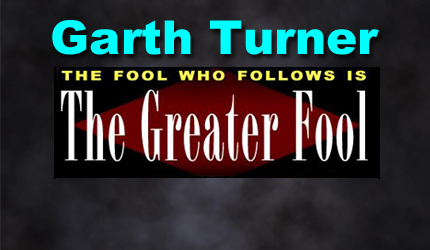June 3, 2021 | Hitting the Wall

Tougher stress test. Mortgage creep. Buyer fatigue. It’s all having an impact on the market. See the stats below.
But the biggest impact of all? That’s price. Now that less than 16% of all Canadians can afford real estate we’re hitting that inevitable, hulking wall of absolute unaffordability. Governments and central bankers ignored the effects of the pandemic, emergency rates and WFH to get us to this point. What happens now is an open guess. But I’d be a sleeket, cowran, tim’rous beastie these days when it comes to making an offer.
Staggering. The average detached in YVR is $1,800,600, a 23% advance over last May. In Toronto a detached averages $1,716,272. In the soulless burbs, it’s $1,331,176. The yearly advance is 37%.
Here’s the saddest news: In the massive GTA market (six million souls) the average property, at $1.1 million, puts the price-to-income ratio at nine. That’s 9. In a normal world it would be three, maybe four on a good street. In terms of the rest of the world this is a red-line number which screams out for a fix. It means in a country with a 70% ownership rate, the vast majority of Canadians could never afford to buy the homes they now occupy. And in Vancouver, pffft, the number is 13.
More misery: in the GTA houses sold last month typically in ten or 11 days. There’s enough inventory for four or five weeks, but it’s increasing. And why would anyone want to be an investor anymore, when the price-to-rent ratio is sitting at 33?
(Recall that the formula is this: Price to Rent Ratio = Average Property Price/Average Annual Rent = Average Property Price/ (Average Monthly Rent x 12).
- 15 & Under: A price-to-rent ratio of 15 or less means it‘s more affordable to buy than rent. Call Mom for a loan.
- 16-20: A price-to-rent ratio in this range suggests it may be better to rent than buy. Wait.
- 21 & Higher: A price-to-rent ratio of 21 or more suggests it’s better to rent than buy, and you should hug your landlord – or refuse to become one.)
This might explain why fewer than 5% of buyers last month were investors. It also helps clarify what’s going down with the condo market, where most of this action occurs. Apartment sales in the GTA, for example, fell 23% last month. Core prices dipped a little to $1,066 per foot downtown and across the region the average sale was $676,000. But rents have dropped – still down 5% year/year – while condo fees, insurance and property taxes are all on the uppa-uppa. So without capital appreciation, only the rubes are wanting to be rentiers.
Well, back to the market. And what’s next.
There’s little doubt the slimy little pathogen pulled demand for real estate forward. What happened in the last six months or so should never have occurred, based on fundamentals like employment levels, GDP, lockdowns, travel restrictions and income gains. But it did. People went nuts with house lust, hormones and FOMO. It will be one of the most destructive legacies of the virus – pricing people out of homes, not just in the core, the city and the burbs, but also the hinterland far and wide.
Is it ending?
Maybe. The increases are unsustainable. Current prices are not supported by rents or incomes. Inventory has been increasing. The stress test is nibbling away at the amount people can borrow. As stated here a few days ago, mortgage guys are bracing for eight Bank of Canada increases in the next few years. Over a fifth of all new borrowers are gambling with debt levels exceeding 450% of their incomes. Political pressure is building as the largest population cohort feels shut out of the market. As the virus fades and the economy stabilizes, both monetary and fiscal stimulus (CB bond-buying, low rates and excessive government spending) will throttle back.
This is not conjecture. It will occur. Already sales peaked in April, dipped in May even as prices increased due to still-tight inventory. Average families cannot afford to buy – not just detached houses, but anything. Nor is this just an urban story any more. We’ve pooched almost the entire nation.
A year ago the average house in Victoria cost $855,000. Now it’s $1,036,100. In Richmond a detached is currently $1,931,300. The median household income is $85,700. Offshore buyers? They’ve largely vanished. We did this to ourselves.
Now tell me again how it ends well.
STAY INFORMED! Receive our Weekly Recap of thought provoking articles, podcasts, and radio delivered to your inbox for FREE! Sign up here for the HoweStreet.com Weekly Recap.
Garth Turner June 3rd, 2021
Posted In: The Greater Fool











